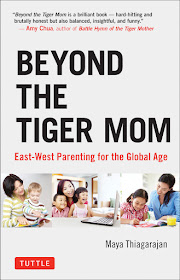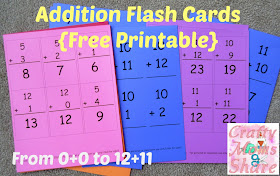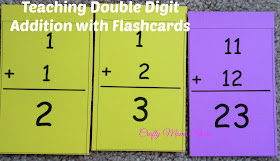Disclosure: Tuttle Publishing
gave me a copy of this book free of charge for this review. All opinions in my review
are
my own and I did not receive any other compensation. As in all my
reviews I am providing links for your ease, but receive no compensation.
As a parent I want to make the best choices for Hazel and I am sure you feel the same way about your own children. With all the mixed messages out there it can be hard. There are the studies that say our children need more free play time and then there are the messages that our kids need to be doing academics more. I had a conversation with a fellow parent of one of the boys in Hazel's class that expressed concern about the school not stressing the academics enough. I was a little shocked because in my opinion it was stressing them too much at such a young age. But this mom has five children with the boy in Hazel's class being the youngest and she told me her older children (who started at a different Christian school that has since closed) had a better foundation in math than our kids are getting. She even talked about the Asian families in Singapore and having to compete with them. It does make one wonder what is being done differently in Singapore, Asia and in Asian American families that often put their kids in the top positions in math and science classes.
In Beyond the Tiger Mom Maya Thiagarajan looks at the Eastern culture and Western culture and compares the two. She points out the positives and negatives of both cultures. She draws from her own experiences as a woman who lived in India as a child, came to America for college and got married and taught here and now lives and teaches in Singapore. She also interviewed many Asian (living in Singapore) families, kids and parents. Through the various culture changes in her life she has navigated herself and her kids and draws from this to make some conclusions. She however does note that as with anyone there is not a steadfast rule to behavior, thought, etc. By no means is she trying to stereotype but more inform and educate. Each chapter also ends with suggestions to help your child succeed in the area presented in the chapter.
Now I found this book fascinating. After all as a former math teacher I was interested in what helped the Asian students succeed often better than the non-Asian students. Thiagarajan discusses how many Asian parents practice mathematics at home with their kids in the way American families read bedtime stories. The Asian culture tends to drill the math facts in with flashcards and workbooks. I have to say this is not a horrible idea. One of my biggest complaints from teaching high school mathematics was how dependent the kids are on their calculator. The kids were not being forced to memorize the standard facts and although most knew them if they really had to not use their calculator there were quite a few who just didn't. It is much harder to do higher level math without the arithmetic facts easily known. This got me to thinking about Hazel. We do math at home sometimes and she knows we find it important. She knows I use to teach it and still tutor sometimes in it and that her father uses math all the time as an engineer. However we do not focus on it the way we do reading and books. I decided to make her some addition flashcards. In her class they go through the math facts by doing timed worksheets (after studying their own flashcards). They have made it the nine facts sheet set or at least she told me they would be starting the nines today.
To print your own set (28 pages in total) of these flashcards you need the front and back files. I printed them on cardstock and decided not to laminate them, but to make them last longer this would be a good idea. I put the lines on the back side to make cutting them apart easier. These cards are for personal use only and if you would like to share them please use a link back to this post. The cards include the sums from 0 + 0 to 12 + 11. Now I know there are many who say flashcards are too boring and that kids should discover their math. I have to say in this instance it is a place I would use them, but if you want kids to discover math you can also use flashcards in different ways. For example if you are teaching the nines, pull all the nine cards and see what patterns a child can find. (Perhaps that the last digit of the sum is one less than the number being added to nine.)
Or if you are teaching adding double digits perhaps pulling ones like these three will help find the pattern to adding the digits.
Also they can be used to show the commutative property of addition (A + B = B + A).
Of course to me the best reason to use flashcards is to ingrain the facts into the child's brain. This will be helpful later in life. Plus knowing how to use flashcards can also a good study habit for later studying as well. I hope you will find these cards useful.
Back to Beyond the Tiger Mom, Thiagarajan points out how Western culture does reading well. Kids are shown that reading is important and also how to understand the story and the big picture. As an English teacher she sees that this is not always the case. In fact many of the parents complain to her that their students do not like to read. When she asks what they are providing to read it is often still the worksheet method. Thiagarajan shows that both cultures have positives and negatives and perhaps the best way to help our kids is to meet in the middle. Personally I find this book fascinating and have recommended it to several people already. To me it is a must read for anyone who wants to know more about education and the best way to educate a child.
As a parent I want to make the best choices for Hazel and I am sure you feel the same way about your own children. With all the mixed messages out there it can be hard. There are the studies that say our children need more free play time and then there are the messages that our kids need to be doing academics more. I had a conversation with a fellow parent of one of the boys in Hazel's class that expressed concern about the school not stressing the academics enough. I was a little shocked because in my opinion it was stressing them too much at such a young age. But this mom has five children with the boy in Hazel's class being the youngest and she told me her older children (who started at a different Christian school that has since closed) had a better foundation in math than our kids are getting. She even talked about the Asian families in Singapore and having to compete with them. It does make one wonder what is being done differently in Singapore, Asia and in Asian American families that often put their kids in the top positions in math and science classes.
In Beyond the Tiger Mom Maya Thiagarajan looks at the Eastern culture and Western culture and compares the two. She points out the positives and negatives of both cultures. She draws from her own experiences as a woman who lived in India as a child, came to America for college and got married and taught here and now lives and teaches in Singapore. She also interviewed many Asian (living in Singapore) families, kids and parents. Through the various culture changes in her life she has navigated herself and her kids and draws from this to make some conclusions. She however does note that as with anyone there is not a steadfast rule to behavior, thought, etc. By no means is she trying to stereotype but more inform and educate. Each chapter also ends with suggestions to help your child succeed in the area presented in the chapter.
Now I found this book fascinating. After all as a former math teacher I was interested in what helped the Asian students succeed often better than the non-Asian students. Thiagarajan discusses how many Asian parents practice mathematics at home with their kids in the way American families read bedtime stories. The Asian culture tends to drill the math facts in with flashcards and workbooks. I have to say this is not a horrible idea. One of my biggest complaints from teaching high school mathematics was how dependent the kids are on their calculator. The kids were not being forced to memorize the standard facts and although most knew them if they really had to not use their calculator there were quite a few who just didn't. It is much harder to do higher level math without the arithmetic facts easily known. This got me to thinking about Hazel. We do math at home sometimes and she knows we find it important. She knows I use to teach it and still tutor sometimes in it and that her father uses math all the time as an engineer. However we do not focus on it the way we do reading and books. I decided to make her some addition flashcards. In her class they go through the math facts by doing timed worksheets (after studying their own flashcards). They have made it the nine facts sheet set or at least she told me they would be starting the nines today.
To print your own set (28 pages in total) of these flashcards you need the front and back files. I printed them on cardstock and decided not to laminate them, but to make them last longer this would be a good idea. I put the lines on the back side to make cutting them apart easier. These cards are for personal use only and if you would like to share them please use a link back to this post. The cards include the sums from 0 + 0 to 12 + 11. Now I know there are many who say flashcards are too boring and that kids should discover their math. I have to say in this instance it is a place I would use them, but if you want kids to discover math you can also use flashcards in different ways. For example if you are teaching the nines, pull all the nine cards and see what patterns a child can find. (Perhaps that the last digit of the sum is one less than the number being added to nine.)
Or if you are teaching adding double digits perhaps pulling ones like these three will help find the pattern to adding the digits.
Also they can be used to show the commutative property of addition (A + B = B + A).
Of course to me the best reason to use flashcards is to ingrain the facts into the child's brain. This will be helpful later in life. Plus knowing how to use flashcards can also a good study habit for later studying as well. I hope you will find these cards useful.
Back to Beyond the Tiger Mom, Thiagarajan points out how Western culture does reading well. Kids are shown that reading is important and also how to understand the story and the big picture. As an English teacher she sees that this is not always the case. In fact many of the parents complain to her that their students do not like to read. When she asks what they are providing to read it is often still the worksheet method. Thiagarajan shows that both cultures have positives and negatives and perhaps the best way to help our kids is to meet in the middle. Personally I find this book fascinating and have recommended it to several people already. To me it is a must read for anyone who wants to know more about education and the best way to educate a child.







No comments:
Post a Comment
I love to hear your comments and ideas. Thank you for reading and contributing!